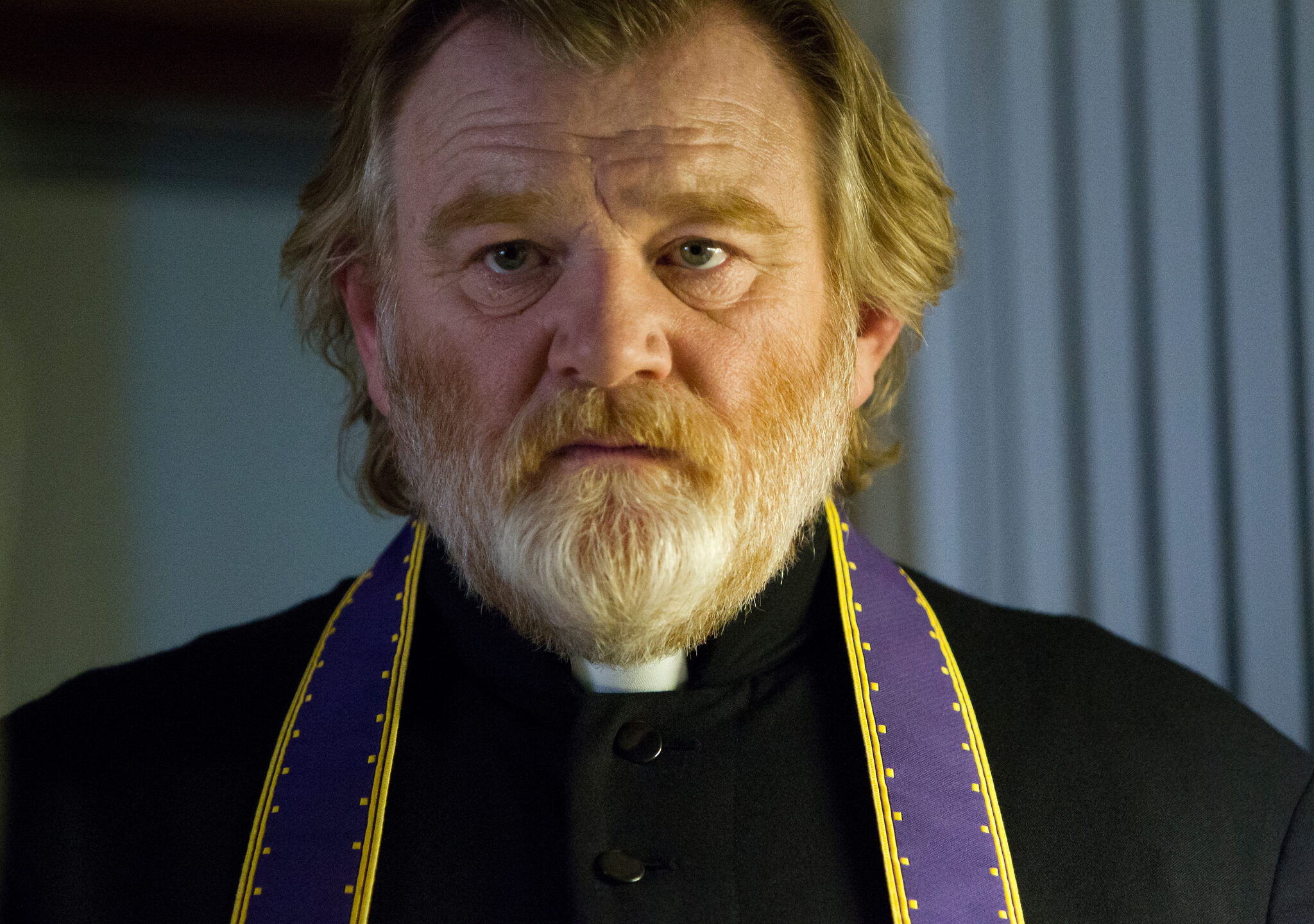Looking to host a Lenten movie night but haven’t settled on the movie yet? The last few decades have brought us a number of first-class Catholic (or Catholic-adjacent) films, from The Passion of the Christ to Into the Great Silence to Of Gods and Men. But in my opinion, there is nothing in modern cinema to match John Michael McDonagh’s 2014 masterpiece, Calvary.
This Irish drama depicts the anguish of clerical sex abuse in unflinching terms and incomparable depth, which makes it essential viewing for twenty-first-century Catholics who are serious about understanding and healing the Church’s wounds. But more than that—and the reason why it’s so appropriate for Lent—Calvary is a uniquely compelling exploration of Christ’s atonement.
The film follows a week in the life of Fr. James Lavelle (Brendan Gleeson), the pastor of a small town on the northwest coast of Ireland. It begins in a confessional, where an anonymous man tells Lavelle that he is going to kill him on the following Sunday in revenge for his childhood rape at the hands of an abusive priest. The man acknowledges that Lavelle has done nothing to deserve such a death. In fact, he states that Lavelle’s innocence is crucial to his plan. “There’s no point in killing a bad priest,” he intones through the grill. “But killing a good one? That’d be a shock now. They wouldn’t know what to make of that.”
This disturbing encounter sets the tone for Lavelle’s interactions with his flock throughout the rest of the film. The town’s inhabitants compulsively burden their pastor with their own pet hatreds and grievances. Like the would-be murderer in the confessional, their goal is ostensibly shock and awe—apparently motivated by sheer malice, they want to upset Lavelle with their own experiences of evil. Michael Fitzgerald, for instance, a millionaire who made his riches from white-collar crime, flaunts his ill-gotten gains at Lavelle in something approximating a sick joke. Similarly, the local doctor tells Lavelle a grisly story of a young boy who was made deaf and dumb and paralyzed for life by a medical accident with anesthesia. He tells this tale for no clear reason other than to crush Lavelle’s spirit.
The film is unrelentingly bleak in its portrayal of the human condition without God.
As the narrative unfolds, however, the viewer begins to sense in the villagers a deeper motivation than spite. Eventually, the audience realizes that each person, whether he realizes it or not, airs his dirty laundry in his pastor’s face because he recognizes the priest as a stand-in for God and his Church, and he desperately wants to break through to him.
The same is true of Lavelle’s intended killer. Discussing the man’s threats, Lavelle’s superior, Bishop Montgomery, muses: “He wants to be loved, of course. . . . Failing that, he wants to be hated and despised.” Lavelle is quick to criticize this observation as trite: “I think you read that in a book, your Excellency.” Nevertheless, he comes to a similar conclusion: “He doesn’t want to be ignored anymore. He wants to make contact.” Make contact with who? With another person, presumably, but also with the God whom he holds, not unreasonably, responsible for his suffering.
In this light, the villagers’ verbal, emotional, and physical abuse are revealed as malicious attacks mixed with subconscious pleas for help. In lashing out against Lavelle, the townspeople are also begging for his understanding through acts of spontaneous confession—according to the Catholic philosopher J. Budziszewski, one of the principal human reactions to violations of the natural law.
Calvary is more than an exploration of psychology, though. At its most fundamental level, the film’s insights are spiritual.
In the first half of Mere Christianity, C.S. Lewis demonstrates that one doesn’t have to be a Christian to observe that every man is a sinner whose compounded transgressions, in the absence of forgiveness, will trap him inside himself, indefinitely alienated from the love of others. Per Lewis, one does have to be a Christian, however, to see the escape hatch.
The various theories of atonement that Christian theologians have proffered over the centuries exist to do just that. Well-known examples include the ransom theory favored by Origen, according to which Christ’s death on the cross is the payment of a ransom to the devil that releases humanity from satanic bondage, as well as the satisfaction theory of St. Anselm of Canterbury, which presents the Crucifixion as the payment of a debt of honor to God on man’s behalf.
More recently, the philosopher René Girard has offered the scapegoat theory. Girard postulates that to receive psychological and sociological relief from their sins, human beings infallibly seek victims (scapegoats) to burden with their guilt and then slaughter, thereby achieving expiation. In the person of Christ, this natural and unavailing impulse is rendered supernatural and effective. By allowing himself to be scapegoated for our sins while perfectly innocent, Christ, says Girard, shows his killers a different way of life is possible than the one fallen people have made for themselves. Our Lord’s sacrifice breaks through man’s hardness of heart and opens the door to a new spiritual realm, one characterized by freedom and forgiveness rather than vengeance and slavery.

Lavelle’s ordeal in Calvary is a kind of dramatized analogy of Girard’s theory. The film is unrelentingly bleak in its portrayal of the human condition without God. Lavelle’s parishioners are both deeply depraved—adulterers, apostates, thieves, and murderers—and deeply pathetic, wounded by senseless evils that seem to defy explanation. Recovery appears so remote that the viewer is tempted to join them in their despair. And yet, Calvary is ultimately triumphant.
At the midpoint of the film, one devout woman to whose husband Lavelle administers last rites shows an extraordinary willingness to endure great evil with peace and even joy. Likewise, Lavelle’s own persistent goodness in the face of cruel and apparently pointless abuse manifests Christ’s atonement for all mankind. Because they see through the eyes of faith, these characters understand that Jesus’ victory on the hill that gives Calvary its name has the power to overcome all darkness.
For the villagers who have no faith, the love of Christians like Lavelle remains an abiding source of hope. Thousands of years after Jesus’ life on earth, Calvary confidently declares, an innocent man’s willingness to suffer for others still has the power to shock sinners out of isolation and into contact with the divine love for which they so deeply yearn—and to empower them, in a strange way, to forgive the God they blame for all their harshest hurts.
Calvary’s acting is excellent; its writing is memorable; and its social commentary cuts to the quick. These are advantages enough by themselves, but when placed in the service of Calvary’s profound spiritual message, they elevate the film to the level of genuine spiritual edification. Movie-watching isn’t typically penitential, but these 101 minutes are Lenten indeed.
